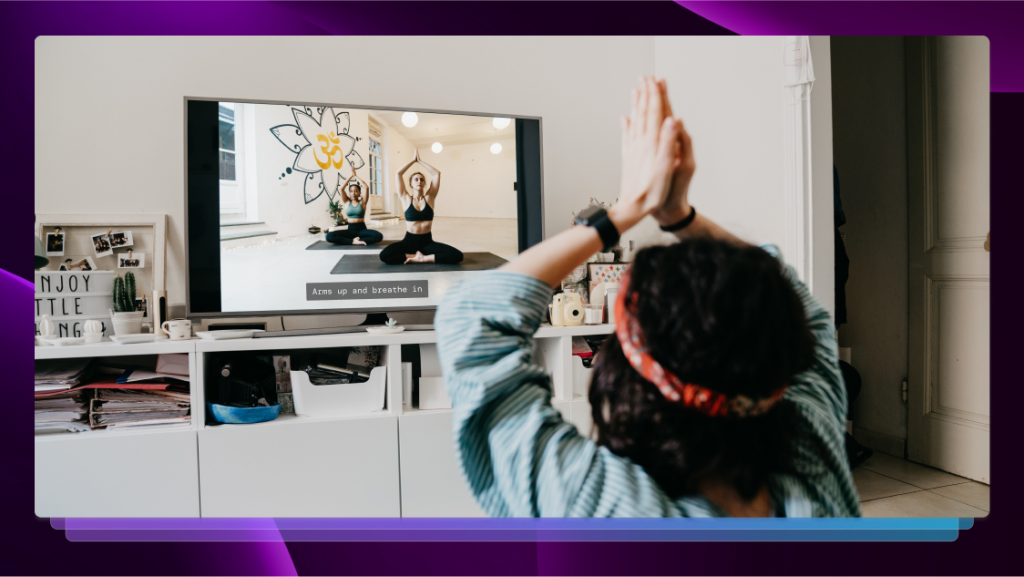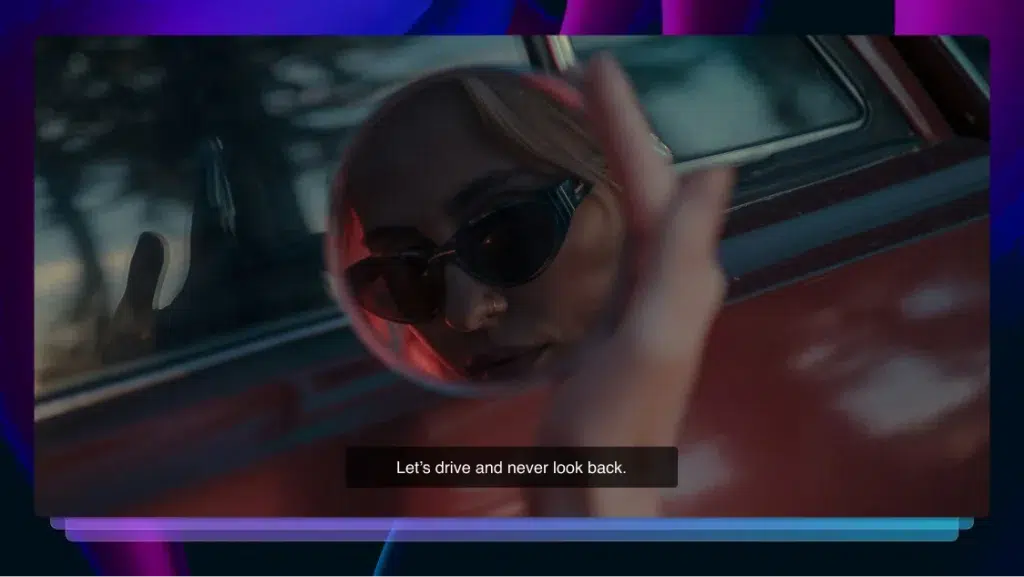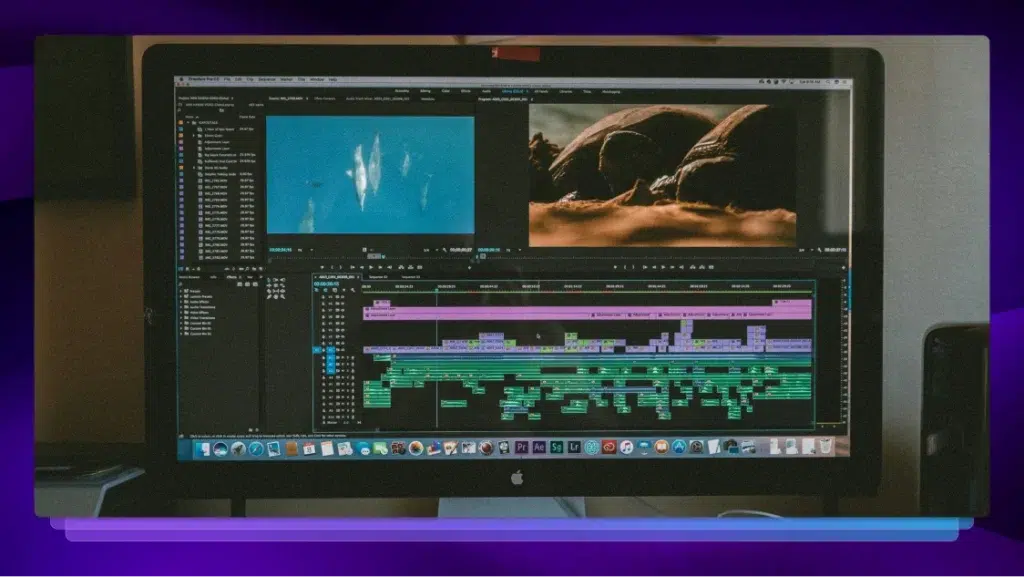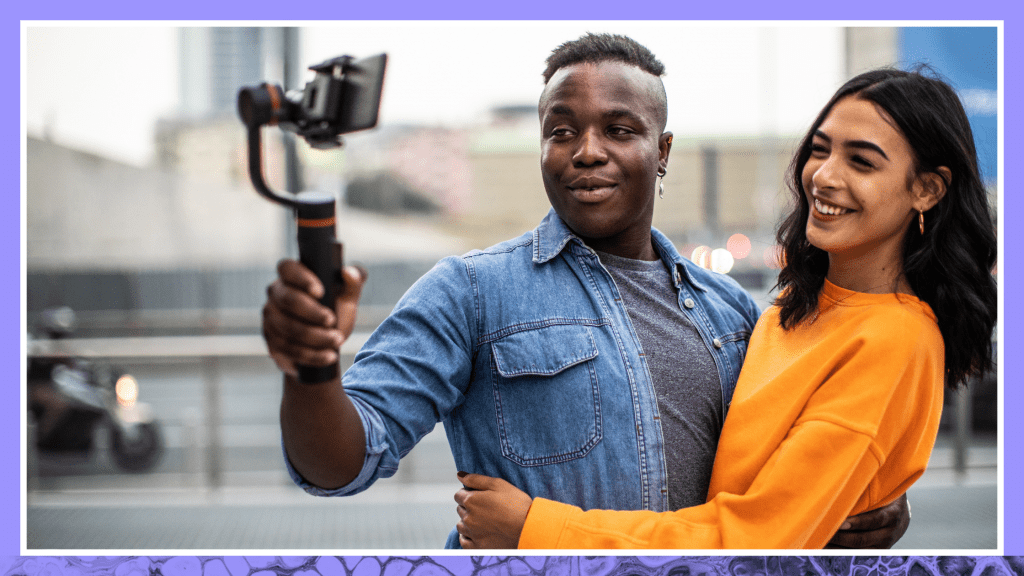How Gen Z and Millennials Watch Video Content & What That Means for Production Teams
Learn how Generation Z and Millennials watch video and how video producers can adjust to meet their viewing needs & wants.

Different generations consume video differently. Some generations spend hours watching videos on YouTube and Facebook. Others only watch videos when they need specific information. Whatever the reason for watching videos, video production teams have to adapt to different audiences. If you don’t diversify your video content and the platforms its on, you could have low engagement and missed goals, leading to wasted effort.
To help you understand how to create and share videos with different generations, we’ll look at two of the youngest groups — Gen Z and millennials. Each consumes more video content than generations before them. Plus, their video-viewing habits are radically different from other generations—and from each other.
We’ll look at how they use video, specifically, their social media, news media, and streaming habits. And we’ll also explore how they view video meant for marketing purposes.
Gen Z
Gen Z, people ages 7-22, are most likely to watch videos on social media. The two most popular platforms are Instagram and YouTube. 65% of Gen Zers use Instagram daily and 62% of Gen Zers use YouTube daily. And with ongoing advancements in mobile technology, more of these videos are watched on smartphones. In fact, almost all Gen Zers own a cell phone.
Social Media Video Habits
Teenage Gen Zers spend most of their time watching videos on YouTube (37%) and Netflix (35%). Most of the videos they watch on YouTube are user-generated. Many of these videos are by influencers like David Dobrik, PewDiePie, and Emma Chamberlain. Gen Zers typically see influencers as more relatable and reachable than celebrities. This makes influencer video campaigns more effective because viewers are more engaged and responsive.
Gen Zers can interact with brands on YouTube without leaving the platform. Getting viewers to engage with videos increases ad revenue for brands.
When you create social media content for this audience, consider partnering with influencers. You can even partner with micro-influencers, vloggers with thousands (vs. millions) of followers, to test how influencer marketing impacts your Gen Z audience. Gen Z viewers are more likely to watch and feel a connection to brands that understand their interests. You can give your social media partners access to Rev, so they can upload videos for your team to transcribe or caption.
News Media Video Habits
Gen Zers are less exposed to traditional news outlets compared to other generations. They prefer to get their news from social media sites. Interestingly, the majority of news viewed by Gen Zers is on Instagram via IGTV. IGTV is a relatively new feature that lets users produce videos that run anywhere from one minute to one hour in length.
IGTV is an incredible opportunity to cater to Gen Z audiences. IGTV is still new, so as an early adopter, you can innovate and test what your audience responds to.
Some easy places to start:
- Shoot vertical 9:16 ratio video to make it easier to watch on phones
- Create health and fitness content
- Create a mini-series that references current events
- Show behind-the-scenes brand footage
Streaming Habits
Gen Z is the first generation to be considered digital natives. They don’t remember a time when the internet wasn’t available and access to information wasn’t at their fingertips. Gen Zers spend more time online and stream more content than any other generation.
Here are a few interesting facts about their streaming habits:
- 73% of teenage Gen Zers watch video on their smartphones (and other mobile devices).
- 7 out of 10 teenage Gen Zers watching more than three hours of mobile video a day.
- Only 33% of teenage Gen Zers watch cable TV.
Create videos with smartphone viewing in mind. Keep videos short to hold viewers’ attention. The shorter the video, the better the chances of people watching them to the end and seeing your call to action.
Short videos also have a short turnaround time when you order captions and transcripts through Rev. Transcripts can be available in as little as one hour and captions in three.
Marketing Videos
With the growth of influencer marketing in recent years, influencers have more of a say in the types of products Gen Zers gravitate to. Partner with influencers who share real and honest content. Gen Zers are drawn to videos where the influencer is similar to them—in age and interests—and doing the same types of activities they do.
To find the right influencers to partner with, figure out what’s important to the segment of Gen Zers you want to target. You’ll not only find it easier to identify relevant influencers, but you’ll also end up with content that’s highly targeted and applicable.
When creating campaigns, also consider the platforms Gen Zers spend the most time on.
The three mobile apps that Gen Z spend the most time on are YouTube, Snapchat, and Instagram.
Use these platforms when creating marketing campaigns that target Gen Z. They’re more likely to see your content.
Since influencers are creating content instead of you, provide them with production guidelines. Include speaking points related to the campaign and define the types of visuals they can use. Even though your team isn’t producing these videos—you shoot your own additional content—give clear directions so that the resulting video closely matches your brand standards. You want audiences to immediately recognize your brand when they started watching influencer videos.
Action Plan for Gen Z
The key to reaching Gen Z with video is to promote content in the places this group spends the most time—on social media. Production teams need speedy workflows to keep up with demand and competition. Fortunately, Rev integrates with YouTube, so your team doesn’t have to manually upload videos. They simply log into Rev and upload any published or listed videos. They can even upload more than one YouTube video URL at a time to Rev to save more time.
Once the video is uploaded, choose whether you want to add in captions or foreign subtitles. Both ensure your audience is able to watch your videos even when sound is turned off or when they’re in different countries. Captions ensure your videos are ADA compliant. When your videos are published online, it’s important that your audience can watch them, regardless of any disability or special needs.
Video captions are ready in as little as three hours. Captions cost $1.99 per video minute, and you’re guaranteed 99% accuracy. Foreign subtitles cost between $6.49-$15.99 per video minute, depending on the language you want to translate to.
Millennials
Millennials, ages 23-36, prefer to watch TV online and on streaming services. They stream more online TV than any other generation—mainly on streaming services like Netflix, Amazon Prime Video, Hulu, and Disney Plus.
Social Media Video Habits
Just like Gen Z, millennials spend a considerable amount of time watching online videos. They prefer Instagram and YouTube. In fact, in the past year, 70% of millennials watched YouTube to learn how to do something new or learn more about something they’re interested in. 45% say a YouTuber inspired them to make a personal change in their life. And 47% of younger millennials watch their favorite TV shows on social media (when they’re available). For millennials, social media is used for entertainment vs. sharing personal information and updates.
News Media Video Habits
64% of millennials watch news online. In particular, 33% of people in this group get most of their news from social media outlets.
Similar to videos targeting Gen Z audiences, publish videos on platforms millennials spend the most time—streaming services, Instagram, and YouTube. Since millennials watch news on social media, they’re more likely to see your video content. Create video ads that play during or after the main video ends.
Streaming Habits
For millennials in North America, Netflix is the top streaming service. Amazon Prime Video is the next popular option. Overall, millennials spend an average of 1.5 hours a day watching TV online and on streaming services.
Millennials still watch traditional TV, but numbers are low compared to baby boomers and Gen X. However, for millennials who watch TV, they’re more likely to stay on one channel vs. switching during commercial breaks. The Nielsen report that confirmed this also states that millennials engage with smartphones and other mobile devices during commercials. Millennials are open to viewing ads during these breaks, but they have to be unique enough to draw millennials’ attention.
Consider creating video ads for social media and for TV. However, focus on how the product or service solves a problem vs. being promotional. 66% of millennials are turned off by promotional videos.
Marketing Videos
Millennials have the most buying power compared to other generations. Combined, all millennials spend $600 billion every year. They’re expected to spend a whopping $1.4 trillion by 2020.
Video plays a big role in millennials’ purchase decisions:
- 23% of millennials use video sites to research products and services.
- 85% of millennials go on to buy products after watching videos.
- Compared to baby boomers, millennials are 150% more likely to use video to comparison shop.
- 70% of millennials use videos to make post-purchase buying decisions.
Since millennials spend time researching products before they buy (either in-store or online), create ads that show products in action. Also, create videos that include product demos and testimonials from previous customers. Millennials are receptive to information that helps them make decisions and appreciate insights that come from other customers.
Action Plan for Millennials
Use Rev to add captions and subtitles to content on streaming services. Netflix is strict about the types of videos it streams on its service—it requires closed captioning on all videos. Captioning ensures that videos are in-line with the requirements of the National Association of the Deaf (NAD). Amazon Video Direct now also requires captioning on its videos.
Use Rev for all of your captioning and subtitle needs. Captioning only costs $1.99 per video minute, and subtitles range from $6.49-$15.99 per video minute. Even with several hours of video to caption and add subtitles to, Rev’s low price point doesn’t negatively impact your budget.
Plus, with the Enterprise feature, your entire video production team has access to created content. When you order captions, anyone on your team can review them, before videos are published.
Tailor Video Content Based on the Audience
A blanket approach to video production doesn’t work. Videos need to be on the right platforms, with the right features (like captions and subtitles), in order for Gen Z and millennial audiences to watch them. By working with marketing teams, your video production team can understand who your audience is and tailor video content accordingly.
Go further and analyze what types of videos have the most views for Gen Z and millennials as a way to improve audience engagement. Focus on these types of videos and corresponding platforms to see if there’s a change in the number of views and click-throughs. Contact us today to learn more about how Rev simplifies video production.















